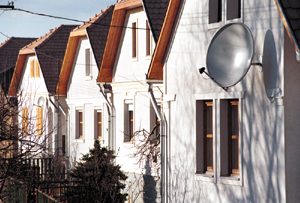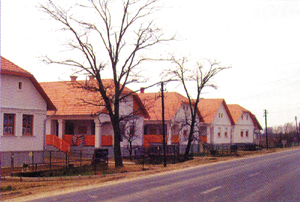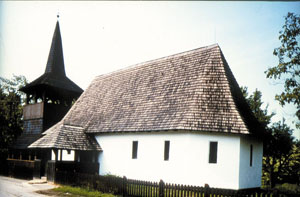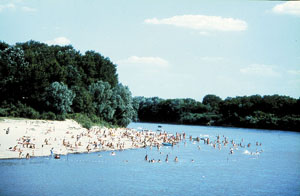Popular destinations nearby
Debrecen,
Hajdúszoboszló,
Hortobágy,
Nyíregyháza,
Szolnok,
Balmazújváros,
Berettyóújfalu,
Csaroda,
Csenger,
Cserkeszőlő,
Derecske,
Fehérgyarmat,
Hajdúböszörmény,
Hajdúdorog,
Hajdúhadház
|
A small village with 417 inhabitants on the Tiszahát (road No. 41). Outstanding sights are the mud-and-dub walled Calvinist church from 1766 with painted coffered ceiling and the belfry from 1757. They were completely renovated between 1982 and 1986. A church report from 1808 says the church is built of wood, its western part was completed a long time ago, but the exact time is not known. The eastern part was extended and was restored using the same wood in 1766 with the following inscription: It was built by the Noble Calvinist Holy Congregation of Tákos based on their financial contribution with the help of God on 30 June 1766. It has two bells, the largest of which has the following inscription: It was made by the Calvinist Noble Congregation of Tákos based on their financial help in 1755. The smaller bell has the following inscription: Soli Deo Gloria 161 S. and on the other side: Hoc opus fieri Joannes Budai. In 1784 the church was extended towards the western direction and the entrance hall was probably built at that time. According to a report by Dezső Csatáry from 1931 The church is a building with wattle-and daub walls, which is based on a wooden framework separate from that of the tower. The walls were built on wooden beams based on mill stones 40-45 cm in diametre. The wooden columns of the walls are cut into these beams with a 2 m distance between them and they are strengthened by X shaped cross bonds and beams carved on them from above. The wood strips pegged on the cross bonds are plastered with mud and lime-mortar. The eastern end of the church is closed by three sides of an octagon. On the ceiling you can see 58 painted coffers, which are unique masterpieces of our folk architecture. In each coffer you can see a different flower motif and on the inscriptions of the boards between them you can read about the history of the church building. Another special value of Tákos is the living tradition of the herring-bone embroidery of Bereg. The settlement was destroyed by the flood of 6th April 2001. Most of the houses were rebuilt in a style characteristic for the Szatmár-Bereg region. A new Village House was built, too. The House of Regional Traditions built in the 1870s is situated opposite the church. It was rebuilt and has been open to the public since St. Lucy´s day in 2003. Pictures of Tákos
|
Tákos map nagyítása >>
|
|
|
Hungary - Tákos |
|
|
|
||
|
Wednesday, 31. December 2025. - 17:59:26 |
||



